- Umang Sagar
- Organisation, Recent article
Police Reforms In India
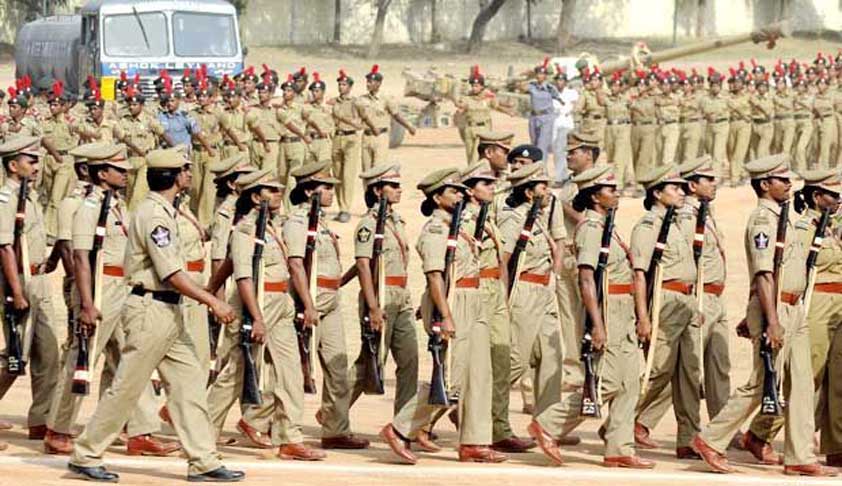
Introduction
- A robust criminal justice system provides the niche for a functional stable society. The Police services are the primary law enforcement agency. They are the backbone of this entire system. As per the seventh schedule “Police” and “Public order” fall into the state list. The center has its own reserve Police forces whereas the Police in the Union territories are under the Ministry of Home Affairs. The Indian police service came into being after the attainment of Indian independence in 1948.
1. History Of Policing System In India
In the Imperial Police Service, the nomination system of recruiting officers was replaced by a combined competitive examination that would recruit officers to the Indian Police for which an exam was conducted in London. The first recruitment exam was conducted in June 1893.
Under Sir Andrew Frazer and Lord Curzon, a Police Commission was established in the year 1902-03. This Commission came up with a trailblazing recommendation giving green signal to the appointment of Indians at the officers’ level. This still meant that the Indians could only rise to the rank of Inspector of Police and were not considered a part of the Indian Imperial Police.
But this changed in the year 1920 when Indians were allowed to become a part of the Indian Imperial Police and were recruited via the civil services exam. The center for the exam was now also in India.
From 1907, officers in this force were directed to wear the letters “I.P” on their epaulettes to stand out from officers who were not recruited by the competitive exam.
The label Indian Police Service was first referred to in a report by the Islington Commission in the year 1917. This changed to just “Indian Police” in the year 1932 which after the independence was known as the Indian Police Services.
The Policing system has existed through the ages but it took its present shape and form only under the imperial rule. The evolution of this body can be studied by segregating it in several phases.
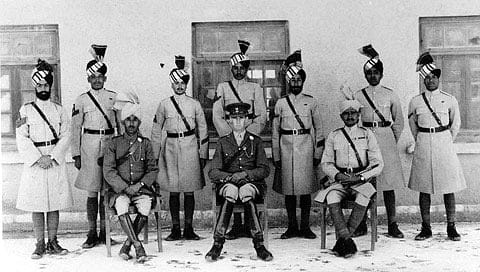
The Britishers started creating its stronghold in India after its victory in Battle of Plassey in 1757. This was the era of decline in the Mughal empire which was followed by a socio-political turmoil. This required for them to exercise better control on the people. This was the time of disintegration of the Mughal empire when Zamindars handled the police. But in the year 1792 Cornwallis was sent to India as Governor-General. He abolished the zamindari system and made Thanadars responsible for the maintenance of law and order. Some other reforms were also introduced. This was later followed by the Indian Police Act of 1861. This also provided framework for the existing Indian police services.
The Sepoy Mutiny of 1857 was followed by appointment of a Police Commission in 1860 which aimed to establish effective control on crime in the area. However, the system so designed was sharply opposite to that of the Britishers, celebrated in the whole world as a symbol of democratic policing. The primary objective was to meet the exigencies of trade and company profit and to ensure that the trade route was safe, exploitation of traders was prevented. The system of policing instituted by the Act is still in force.
After 1920, the imperial forces were open for the Indians through entrance examinations. Despite this, the entry of Indians into the forces was very limited. Due to the unavailability of Europeans, more Indians started getting appointed to the services later.
After 1860 there were two channels of recruitment of senior police officers- first, by the appointment of officers from the British Army, and second, by nomination from amongst younger sons of landed gentry in the UK. Both of these ways were abolished in 1893. Recruitment of officers now was done through a combined competitive exam held in London allowed only to Europeans.
2. Police In The Modern Times
- According to the Constitution, the police force is a state subject. States draw rules, regulations and guidelines for the police in the state police manual. The organization structure of police forces in India is fairly uniform in all the states throughout the country. The head of the police force in a state is called the Director-General of Police (DGP). A state is further divided into several zones, ranges, and districts. The district force is headed by an officer of the rank of Superintendent of Police (SP) before that the police services officers are deputed as Deputy superintendent of Police and promoted to the position of Additional Superintendent of Police. A group of districts forms a range which is headed by an officer of the rank of Deputy Inspector General of Police (DIG). Zones are composed of two or more ranges headed by an officer of the rank Inspector General of Police (IG). Districts are further subdivided into sub-divisions like circles and police stations which are headed by officers of different ranks. The district police are also divided into two branches—the civil police and the armed police, where the former primarily controls crime, and the latter deals with law-and-order situations and is also the reserved police of the district kept to meet an emergency situations.
Hierarchy of Police in India
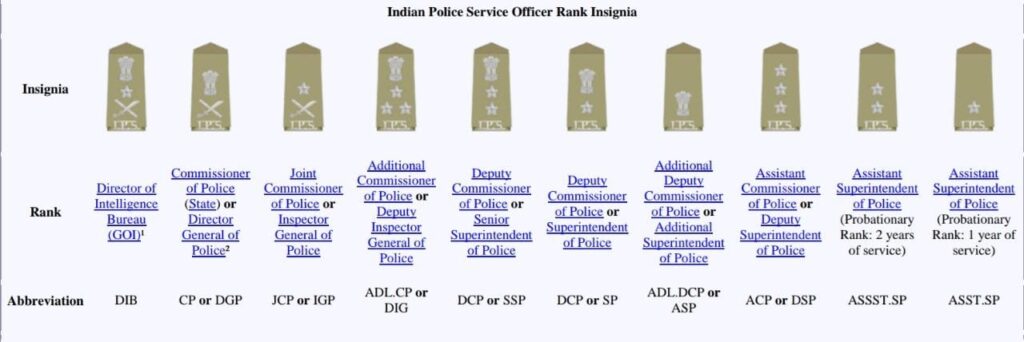
- Director-General of Police (D.G.P.)
- Additional Director General of Police
- Inspector-General of Police (I.G.P.)
- Deputy Inspector General of Police
- Senior Superintendent of Police (S.S.P.)
- Superintendent of Police (S.P.)
- Additional Superintendent of Police
- Deputy Superintendent of Police (D.S.P.)
- Assistant Superintendent of Police
P.P.S./ S.P.S. Or Provincial/ State Police Service Officers
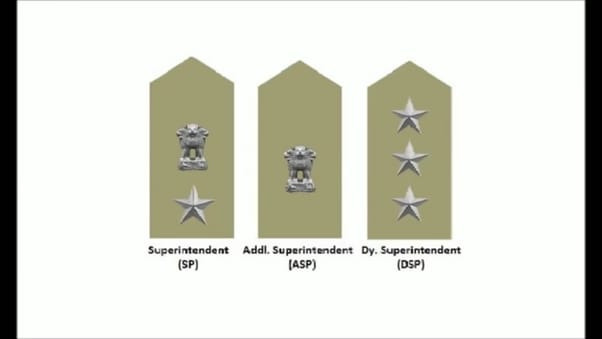
- Senior Superintendent of Police
- Superintendent of Police
- Additional Superintendent of Police
- Deputy Superintendent of Police (D.S.P.)
Upper Subordinate
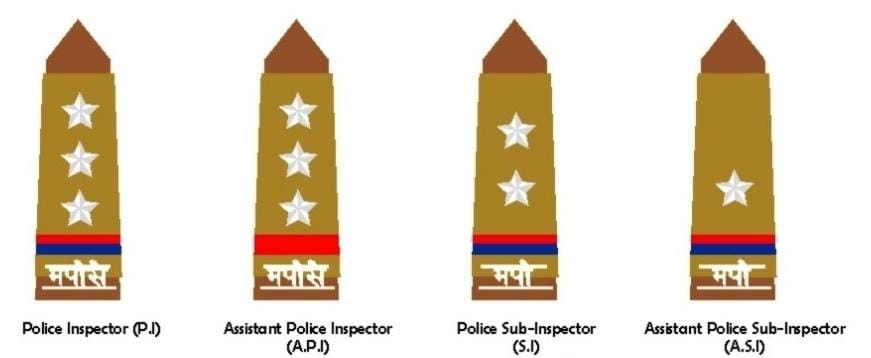
- Inspector of Police (P.I.)
- Sub-Inspector of Police (S.I.)
- Assistant Sub-Inspector of Police (A.S.I.)
Constabulary

- Head Constable (H.C.)
- Constable (C.T.)
- Sepoy
The policing systems in Districts versus Metropolitan cities have certain distinctive features. The Superintendent of Police (SP) or Senior Superintendent of Police (SSP) is in charge of a district and maintains law and order situations by working with the District Magistrate (DM). Although in some states of India, the Commissioner of Police undertakes the magisterial powers of DM are given to the CP as well as officers under him/her. The British Indian government had brought the CP system first in Kolkata and Chennai in 1856 and followed it in Mumbai in 1864.
Sir Henry Lawrence, the Governor’s agent of ‘Northwest Frontier’ in 1847 adopted for the first time the khaki uniform that the Indian police dons. The only exception to it is the Kolkata Police which still wears white uniforms, while the West Bengal Police wear khaki uniforms.
The Central Reserve Police Force (CRPF) recently moved a proposal seeking to change the khaki uniform of its over 3 lakh personnel to give the CRPF a separate identity.
Systematic Deficiencies And The Need For Police Reforms In India
The changing times necessitate changing orientation and system in the Police services as well. A transformation in the policies and practices of the police organizations which is in synchrony with the constitutional values is needed. There are several committees and recommendations by scholars and the courts on what should be the further course of the Policing system in India. Below are some of the important recommendations:
1. National Police Commission 1977–81
These National Police Commissions were set up by the Indian government to assess the functioning of the Indian Police. The committee was formed after an emergency in 1979 and worked on eight reports between 1979-81.
2. Ribeiro Committee 1998–99
In 1996, two former senior police officers filed a Public Interest Litigation in the Supreme Court, asking for the Court to direct governments to implement the recommendations of the National Police Commission. The Supreme Court directed the government to set up a committee to review the commission’s recommendations, and thus the Ribeiro Committee was formed. The committee, under the leadership of J. F. Ribeiro, a former chief of police produced two reports.
3. Padmanabhaiah Committee 2000
In 2000, the government set up a third committee on police reform, this time under the stewardship of a former Union Home Secretary K. Padmanabhaiah. He headed the Committee on Police Reforms set up by the Government of India to study the functional capabilities of the Indian Police Service and propose reorganization measures to revamp the force. The committee studied, among others, three major areas, Politicization and Criminalization of Police, Control over Police, and Accountability of Police, and proposed various reform measures including the replacement of the Indian Police Act of 1861.
4. Malimath Committee Report 2003
The Malimath Committee Report submitted in March 2003 has very articulately laid down the foundation of a restructured and reoriented police system. The Committee in its report observed that the success of the whole process of the Criminal Justice Administration depended completely on the proper functioning of the police organization, especially in the investigation stage. Apart from the investigation of offenses, the police also have the duty of maintaining law and order.
5. Soli Sorabjee Committee 2005
In 2005, the government put together a group to draft a new Police Act for India. It was headed by Soli Sorabjee (former Attorney General). The committee submitted a Model Police Act to the union government in late 2006.
6. Supreme Court intervention 2006
In 1996, Prakash Singh (former chief of Assam Police and Uttar Pradesh Police and subsequently Director-General of the Border Security Force) initiated a Public Interest Litigation (PIL) in the Supreme Court of India, asking the court to investigate measures to reform the police forces across India to ensure the proper rule of law and improve security across India. The Supreme Court studied various reports on police reforms. Finally, in 2006, a bench of Justice Y.K. Sabharwal, Justice C.K. Thakker, and Justice P.K. Balasubramanyan ordered the state governments to implement several reforms in the police force.
Measures were identified as necessary to professionalize the police in India:
- A mid or high-ranking police officer must not be transferred more frequently than every two years.
- The state government cannot ask the police force to hire someone, nor can they choose the Director-General of the State Police.
- There must be separate departments and staff for investigation and patrolling,[49] which will include the creation of:
- A State Security Commission, for policies and direction
- A Police Establishment Board, which will decide the selection, promotions, and transfers of police officers and other staff
- A Police Complaints Authority, to inquire into allegations of police misconduct
In 2006, due to a lack of action by all the state governments, the Supreme Court ordered the state governments to report to it why the reform measures outlined were not implemented. After being questioned in front of the judges of the Supreme Court, the state governments are finally starting to reform the police forces and give them the operational independence they need for fearless and proper law enforcement. Tamil Nadu Police has been at the forefront of the application of the new referendum.
Again, in October 2012, a Supreme Court bench of Chief Justice Altamas Kabir and justices Surinder Singh Nijjar and Jasti Chelameswar asked all state governments and Union territories to inform about the compliance of its September 2006 judgment. The order was passed when Prakash Singh through his lawyer Prashant Bhushan said that many of the reforms have yet not been implemented by many states’ governments.
Madras High court also took cognizance of the systemic deficiencies in the Policing system of India and suggested several reforms some of which were about weekly offed to the police officials as they are often overworked whereas India has 137 police officials on every lakh people whereas nations like Russia and South Africa have two-three times a greater number of police though their population is lesser than ours.
Recommendations For Reforms: Committees And Reports On Indian Police Reforms
1. Overburdened Police Forces

The current policing system makes it susceptible to exploitation by politicians. Both State and Central police forces operate on the fringes of the influential executives. The problem of Overburdened Police Forces in India is short-staffed.
In the year 2016, the state forces had 24% vacancies (5.5 lakh) and the central forces had 7% vacancies. India has 137 police personnel per lakh of the population while the sanctioned strength is 181 which is woefully inadequate when compared to the United Nations recommended standard of 222 personnel per lakh people. This results in enormous workload and also led to poor mental health.
2. Police brutality
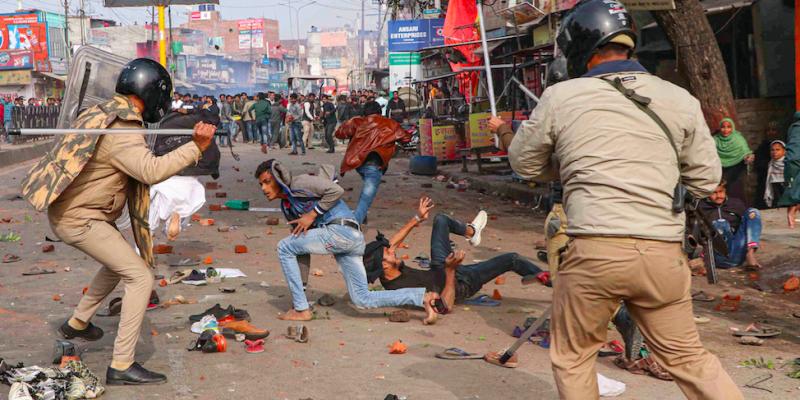
- Police brutality is becoming an ablaze issue with the passage of time. There are many grievances against the police such as unlawful arrests, unlawful searches, torture while in custody, and even custodial rapes and deaths. Recently, cases of custodial torture and deaths like the case of a father-son duo in Thoothukudi, and ‘encounter’ killings like Telangana Encounter had led to serious question marks on the integrity of the police force. There have been several cases of moral policing and other corrupt practices as well.
3. The Problem Of Inadequate Resources In The Polices Forces

- According to the CAG audit reports of the year 2015-16, have found shortages in weaponry with state police forces. For instance, the states of Rajasthan and West Bengal had shortages of 75% and 71% respectively in required weaponry with the state police. Another report according to the Bureau of Police Research and Development has also noted a 30.5% deficiency in stock of required vehicles with the state forces.
4. Issues Related To Promotion
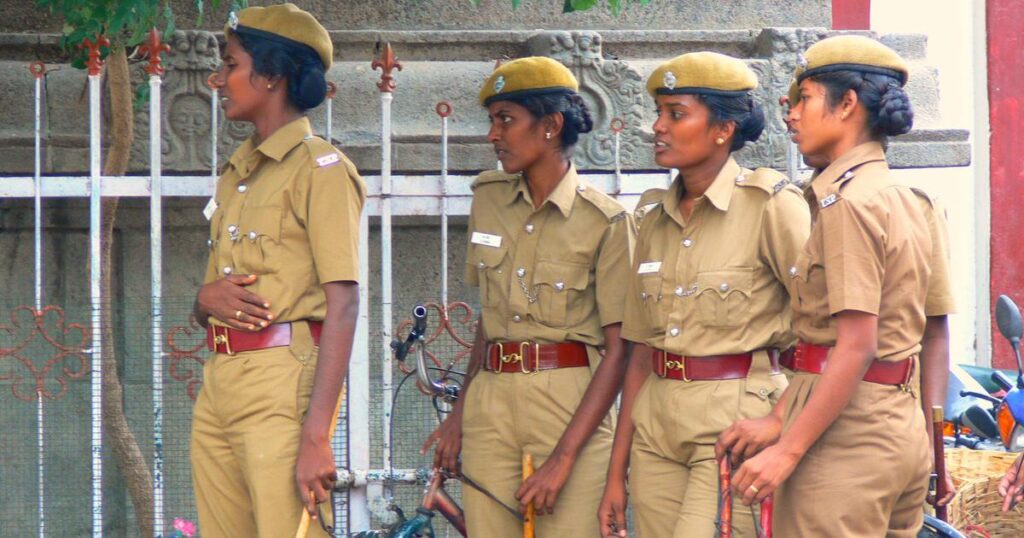
The recent debate about filling up top positions in CAPF from the cadre itself is recommended by the Joshi Committee but that is still not the case as top officials are often recruited from the Indian Police Services.
A similar issue exists with the constables who constitute 86% of the police force.
There have been recommendations to modify the eligibility requirements for constabulary appointments. There also is a lack of mobility in the services as a police constable is generally promoted only once in his career and mostly retires as a head constable which could result in a lack of motivation on the job. There also happens to be an issue of promotion of officers selected from the state PCS (Provincial Civil Services) lose motivation to work in dearth of promotion or other incentives.
5. Lack Of Proper Investigative Instruments
- The Law Commission and the Second Administrative Reforms Commission have noted that state police officers often neglect this responsibility because they are understaffed and overburdened with various kinds of tasks. It is also found that they do not have adequate training and expertise to conduct professional investigations. This creates a barrier to efficient policing.
6. Police-public Relations
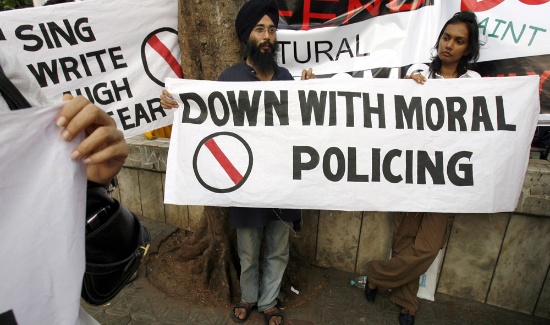
- Numerous cases of moral policing, corrupt practices, and other forms of police brutality have surfaced in recent times. Police need the support of the public in the discharge of their duties like solving crimes and maintaining law and order. There is a trust deficit among the public when it comes to the police who are often seen as corrupt, inefficient, and politically partisan. Recently the government disclosed that between 1st April and 30th November 2015, 25,357 cases were registered under the police category which included 111 deaths in police custody, 330 cases of custodial torture, and 24,916 in others.
7. Revamping The Policing Approach

There is a need to improve the capacity and infrastructure of police forces. The emphasis is on SMART Policing. This includes Revisiting the constitution of police forces in the country through legislative/ administrative changes. The police forces need to scale up technologically as this is the age of increasing cyber-attacks and cyber-crimes.
The Second Administrative Reforms Commission and the Supreme Court have observed that there is a need to have an independent complaints authority to inquire into cases of police misconduct. This will promote independent and critical judgment.
Community Policing mechanisms can also help in reducing the trust deficit between police and the public as it requires the police to work with the community for prevention and detection of crime, maintenance of public order, and resolving local conflicts, with the objective of providing a better quality of life and sense of security.
Some examples can be ‘Janamaithri Suraksha Project’ in Kerala, Rajasthan through ‘Joint Patrolling Committees’, Assam through ‘Meira Paibi’, and others.
There should be an attempt to consolidate various committees and boards like State Security Commissions and Police Establishment boards. Reports on police reforms and their structural application should be prioritized. The CAG and the Bureau of Police Research and Development (BPRD) have noted that modern policing requires strong communication support, state-of-art or modern weapons, and a high degree of mobility.
8. Feminization Of The Services
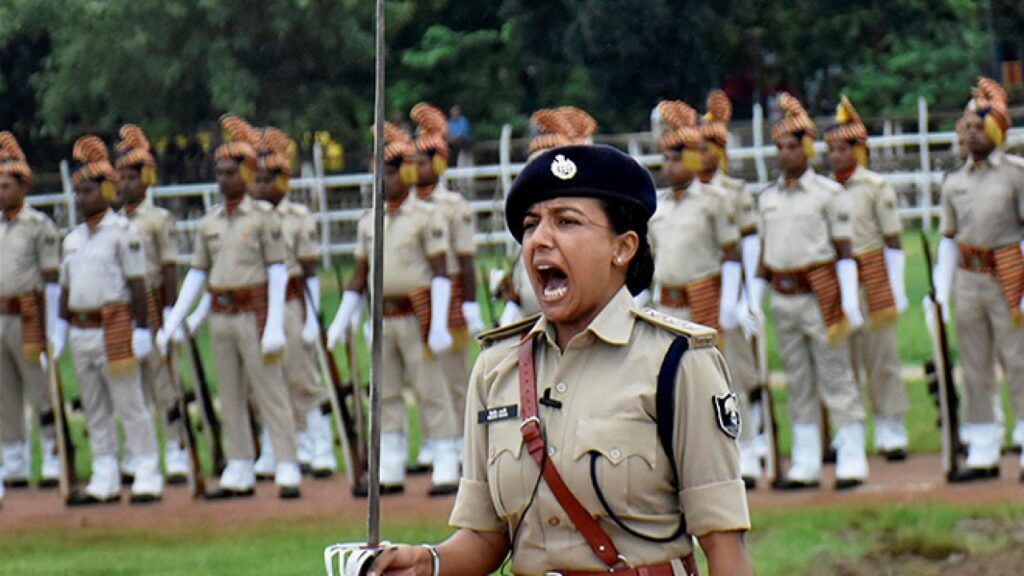
- Women make up only 7 percent of the total strength of the police forces. The Tamil Nadu force police force is women as against less than 1 percent in Assam. This is despite the fact that 12 States have over the years passed rules setting a quota of 30 percent or more for women in the police force. There is still a lack of equality of women officers in the forces.
9. Misrepresentation Of The Police In The Media
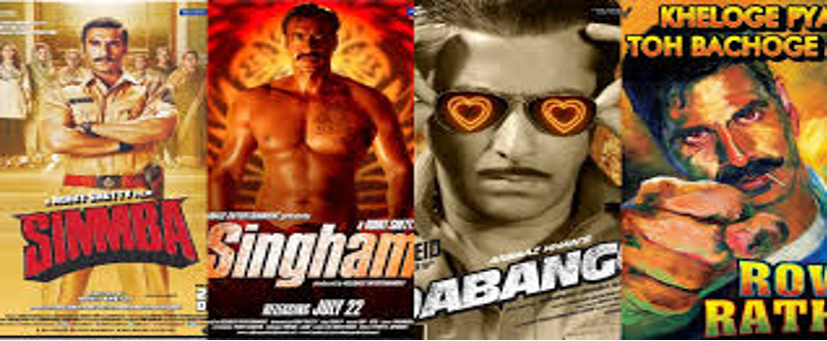
The Media representation of Police in the forces is more often than not a realistic one. Police officers portrayed as macho superheroes are a Bollywood staple. The list of movies like Singham, Sooryavanshi, Dabang puts out a problematic picture of police officers who are nothing like people in our real lives. This has led to a seeming state of what Hannah Arendt would call the Banality of evil. People have come to see police as more of the unapproachable bad guys than everyday law enforcement officials. There is a need to bridge the gap between the people and their officers.
In conclusion, the Indian policing system needs to keep up with the demands of the changing times. Crime has only evolved in modern times and this requires cooperation between both police and civilians. The endless recommendations of various committees and researches need to be transformed from mere sentences to provide a framework for structural reforms to be undertaken at a large scale.
Top 13 Interesting Facts About The Indian Police
Sardar Vallabhbhai Patel National Police Academy (SVNPA) is the premier institute of police training in India for Indian Police Service (IPS) Officers.
The Police War memorial in New Delhi commemorates several police officers who lost their lives in the line of duty.
The first-ever woman police officer in India was recruited to Kerala’s Travancore Royal Police in 1933.
Kiran Bedi was the first woman to join the Indian Police forces.
K Prithika Yashini is the first transgender woman to be a police officer in India. She became the first Trans woman sub-inspector in Tamil Nadu.
According to recent data, 30% of all cases up for investigation are pending.
The most understaffed states of India are Uttar Pradesh, Bihar and West Bengal with less than 100 officers peer lakh people.
According to PRS legislative research, the expenditure on police forces has come down from 4.4% in 2011-2015 to 4% in the last four years.
Around 427 people died in police custody between 2016 and 2019 according to the latest data by the Ministry of Home Affairs
There are only 137 officers on every 1 lakh official in India.
Women only make up 7% of the entire police force in India.
Apart from the state police forces, the center has its reserve forces under 9 battalions and 1, under umbrella organization CAPF.
In consonance with Section 34 of the Right of Persons with disabilities act, 2016 center has decided on a 4% quota for people with disabilities in Police services under the IPS and CAPF.




